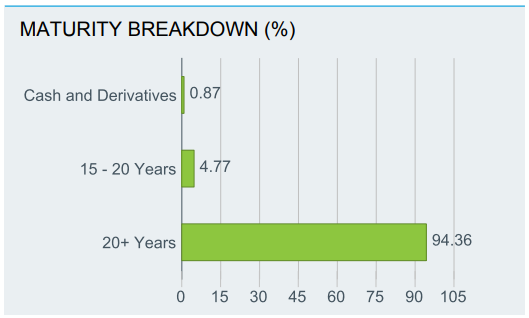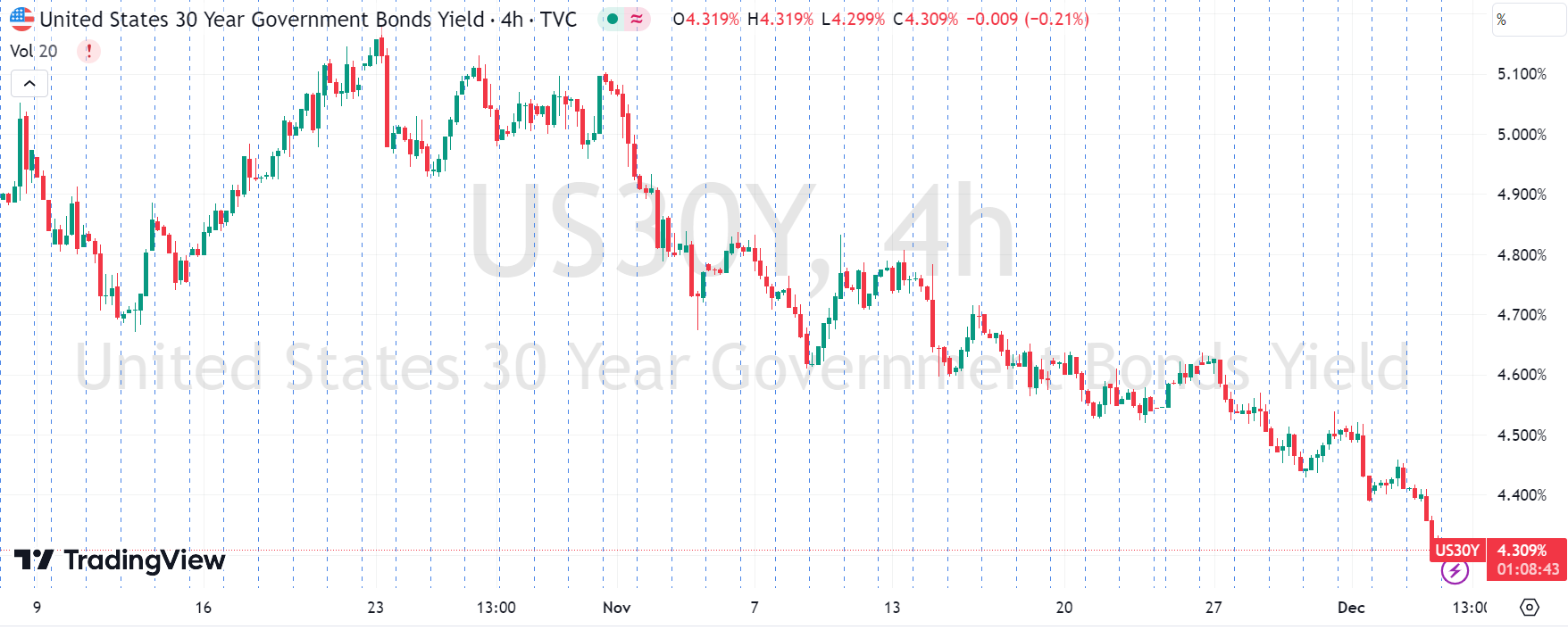How to invest in the trend of US Treasury bonds with ETFs?
After peaking at the end of October, US bond yields have been decreasing steadily, and trading in long-term has become "crowded". The reasons are clear:
1. Recent US economic data does not support further interest rate hikes, and the pace of economic slowdown may even be faster than expected. This also increases the risk of "staying at the current interest rate level for longer". CPI is already a lagging indicator, reflecting macro trends from a previous period. Powell is very cautious and would rather miss out than predict (market predictions) in advance, so the market always moves ahead of policy.
2. Long-term US bonds with yields over 5% are rare, and in addition to common asset allocation demands, they also attract some speculative traders. The liquidity of long-term bonds is not as good as short-term bonds, so in a situation where buying power is too strong, there is basically no obstacle to a continuous decline. Stock investors can compare this to the scenario of "short squeeze".
3. All investors understand that the current high interest rates cannot be sustained for long, and there is still a lot of room to return to a level similar to inflation.
Therefore, even if trading is crowded and there is no trend of rebound, it has been going down all the way, which indicates that many funds have begun to look for targets for next year's returns.
Participation of individual investors
Compared with institutional investors who can afford to "buy and hold" or implement some bond strategies, most individual investors participate indirectly through ETFs.
The main target with good liquidity and low capital requirements is $iShares 20+ Year Treasury Bond ETF(TLT)$ with a maturity of more than 20 years.
This ETF, which was issued in 2002, has been traded for more than 20 years. Its main components are 30-year Treasury bonds, to be precise, all bonds purchased are 30-year bonds (only one is a 20-year bond issued in 22 years), and the average time to maturity is greater than 20 years.
Management fee rate is 0.15%, and there are no other taxes or fees, which is relatively low.
What's more, many other long-term Treasury ETF products are based on it, such as the $Direxion Daily 20 Year Plus Treasury Bear 3x Shares(TMV)$ $Direxion Daily 20+ Year Treasury Bull 3X Shares(TMF)$ $ProShares Ultra 20+ Year Treasury(UBT)$ $ProShares UltraShort 20+ Year Treasury(TBT)$
The 30-year Treasury bond is the most significant and actively traded long-term US bond, and the market pricing is relatively stable due to the relatively sufficient buyers and sellers. Especially for those who think that the 10-year bond is too short. However, the recent yield has quickly fallen to 4.3%.
Many investors are waiting for when the 30-year yield will rise again or when Powell will make some hawkish comments, which may provide an opportunity to buy.
But I think there is probably no such good opportunity.
1. Economic data should not support "rate hikes/maintaining high interest rates" anymore. On the supply side, energy prices fell in November; on the demand side, although retail sales growth is high, competition is fierce, and even large retailers like $Amazon.com(AMZN)$ have joined the low-price competition with $Pinduoduo Inc.(PDD)$ Temu. Both supply and demand sides ensure that CPI will not be good in the coming months.
2. Since the end of October, the main force that has added long-term bonds against the trend is pension funds and other institutions. These investors have a lot of "buy and hold" demand (because they need these coupon payments to support cash flow) and are not easy to sell.
3. International giants such as China and Japan's central banks have not yet increased their holdings of long-term US bonds. Once they increase their holdings, they can only push up prices.
Therefore, unless there is another COVID-19-level event, it is difficult to change the downward trend of long-term US bond yields.
Of course, if you think that the current price is difficult to "chase up," then consider becoming a seller of options.
For example: if you think that the price-performance ratio of selling PUTs on TLT is not high, you can choose leveraged products such as $ProShares Ultra 20+ Year Treasury(UBT)$ $Direxion Daily 20+ Year Treasury Bull 3X Shares(TMF)$ and sell their PUTs.
On the other hand, if you want to maintain your net short position on long-term Treasury bonds for reverse ETFs (which are inherently short), you need to short these "short ETFs" by selling CALLs $ProShares UltraShort 20+ Year Treasury(TBT)$ $Direxion Daily 20 Year Plus Treasury Bear 3x Shares(TMV)$
Disclaimer: Investing carries risk. This is not financial advice. The above content should not be regarded as an offer, recommendation, or solicitation on acquiring or disposing of any financial products, any associated discussions, comments, or posts by author or other users should not be considered as such either. It is solely for general information purpose only, which does not consider your own investment objectives, financial situations or needs. TTM assumes no responsibility or warranty for the accuracy and completeness of the information, investors should do their own research and may seek professional advice before investing.



Great ariticle, would you like to share it?